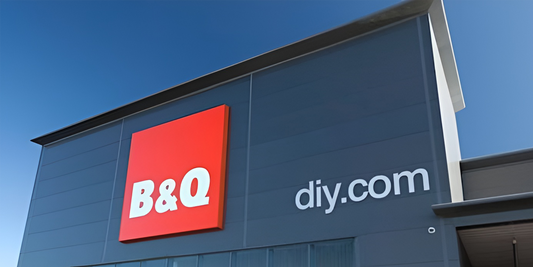
Succeed with Shopify SEO: How to Get Your Print on Demand Store Ranking Higher
Izel DugenShare

If you’re running a print on demand (or POD) store on Shopify, you probably already know that standing out in search engine results can make all the difference. The better your store ranks on Google, the more organic (a.k.a. free) traffic will come through to your store. And more traffic? That means more sales.
SEO (or Search Engine Optimization) might sound technical, but don’t worry - it’s just about making sure search engines (and customers) can easily find your store. Here’s some tips on how to optimise your Shopify POD store for better rankings and higher visibility.

1. Nail Your Keyword Strategy
Your customers are out there searching for your products, but are you using the right words on your website to help them find you?
Here’s how to help them find you:
- Use long-tail keywords. When writing copy on your website, instead of just writing “custom t-shirts,” try adding more detail, such as “funny custom t-shirts for dog lovers.”
- Think like a buyer. Get into the mindset of someone who would be looking for your products, what would they be typing into Google?
- Sprinkle keywords naturally in product titles, product descriptions, image file names, alt text and even URLs - but avoid stuffing them in unnaturally as that can negatively affect your rankings.
2. Optimise Your Shopify Store’s Structure
A clean, easy-to-navigate store isn’t just good for customers – it also helps search engines understand your site as well.
- Keep your site layout simple and intuitive, with smooth UX.
- Use descriptive and SEO-friendly URLs (e.g., yourstore.com/custom-cat-mugs instead of yourstore.com/product1234).
- Make sure your store is mobile-friendly—Google loves mobile-first designs that users can experience across platforms.

3. Speed Up Your Site (Because No One Likes Slow Pages)
If your store takes forever to load, visitors may very well bounce - and Google will notice this.
- Compress image files without losing quality (Shopify has built-in tools, or use TinyPNG).
- Use a fast, lightweight Shopify theme that isn’t overloaded with unnecessary features that you don’t use.
- Limit apps and plugins to only what you truly need to avoid slowing your store down.
4. Craft Great Product Descriptions
Effective SEO isn’t just about pleasing Google, it’s about convincing customers to buy. After all, you’ll want to see the effort you put into your store correlate to your sales and revenue. To make sure your SEO is leading to conversion, here are some steps you should take:
- Write unique, detailed and compelling descriptions using keywords instead of using generic supplier text.
- Highlight key features, benefits, and why your product is a must-have.
- Include keywords naturally but keep the focus on making it easy for customers to say “yes” to buying.
5. Use SEO-Optimised Images
Your might think you’re product images are just for showing off what your product looks like, but your images can also play a part in boosting your SEO too. Here are the best practises for SEO-optimising your image files:
- Rename images with keywords before uploading (e.g., custom-dog-mug.jpg instead of IMG1234.jpg).
- Add alt text to each image, describing what’s in the photo.
- Make sure image file sizes are as small as possible without losing quality to keep loading times fast.

6. Blog Your Way to Better Rankings
A blog is one of the best ways to drive traffic to your Shopify store (and don’t we know it!):
- Write about topics your customers care about, like gift guides, trending designs, or behind-the-scenes stories.
- Include internal links to your products within blog posts to make your website ultra-shoppable.
- Keep posts SEO-optimized with keywords and engaging, valuable content.
7. Build High-Quality Backlinks
Backlinks are when other sites link to yours. A lot of backlinks tells Google your store is trustworthy and authoritative.
- Get featured on blogs, review sites, or online magazines.
- Partner with influencers who can link to your products.
- List your store on relevant directories and industry sites.
8. Use Shopify SEO Apps to Make Life Easier
Shopify has plenty of apps to help automate SEO improvements:
- Plug in SEO – Scans your store for issues and suggests fixes.
- SEO Image Optimizer – Helps with alt text and image compression.
- Smart SEO – Generates meta tags and structured data automatically.
9. Focus on User Experience (Because Google Pays Attention)
Search engines typically prioritise sites that provide a great user experience. In practise, that means:
- Easy site navigation and clear product categories.
- Fast loading times and mobile responsiveness.
- Engaging content that keeps visitors on your site longer.
10. Track & Adjust With Analytics
SEO isn’t a “set it and forget it” game, best practises keep changing and the effect is cumulative so you’ll need to keep tweaking.
- Use Google Search Console to track your rankings and fix errors.
- Check Google Analytics to see where traffic is coming from.
- Adjust your strategy based on what’s working (and what’s not).

Final Thoughts
Shopify SEO takes time to build up, but every small tweak adds up to more visibility, more traffic, and ultimately, more sales. Start with a few of these strategies, track your progress, and refine your approach as you go. SEO success doesn’t happen overnight, but once it kicks in, it’s a game-changer for your print-on-demand business.


